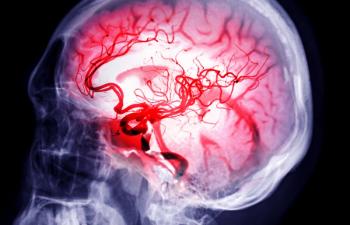
- November 2018 Cough, Cold, & Flu
- Volume 84
- Issue 11
Panel Members Discuss Burden of NVAF on the Health Care System
During a recent panel discussion, 5 pharmacists and physicians raised key points about reducing the cost of managing nonvalvular atrial fibrillation (NVAF).
During a recent panel discussion, 5 pharmacists and physicians raised key points about reducing the cost of managing nonvalvular atrial fibrillation (NVAF). The Peer Exchange, titled “A
The Peer Exchange featured a discussion among key opinion leaders about anticoagulation clinics and therapy, novel oral anticoagulants (NOACs), and stroke prevention in NVAF. The panel members were Gary M. Besinque, PharmD, FCSHP; Jaime E. Murillo, MD; Juvairiya Pulicharam, MD; Ralph J. Riello III, PharmD, BCPS; and Peter Salgo, MD.
The discussion began with background information about NVAF, including statistics and goals of treatment. “NVAF accounts for 95% of diagnosed cases of atrial fibrillation (AFib) in the United States,” Salgo said. “NVAF continues to impose a significant resource and cost burden on the United States health care system.
“The treatment goals in NVAF management are to prevent stroke, maintain sinus rhythm, and provide symptomatic relief,” he added.
The panel members discussed some of the biggest concerns with NVAF, including the direct costs of emergency department and office visits, hospitalizations, and readmissions, as well as the indirect costs associated with drugs and adverse events, the increased risk of stroke, and the strong correlation with heart failure.
“That’s probably where the main burden is, the fact that there are consequences associated with atrial fibrillation, not just an isolated event,” Murillo said.
Of the risks associated with AFib, stroke is possibly the most worrisome in terms of preventing financial strain. “If you take a look at the cost burden here, treating AFib is one thing. But once you have a devastating stroke, the cost burden skyrockets…and it’s huge,” Salgo said.
“There are all kinds of rehabilitation. There are all kinds of help that you’re going to need to get through the rest of your life,” Salgo continued. “This is something worth avoiding.”
Anticoagulation therapy is crucial for preventing strokes in patients with AFib. The panel members discussed proper dosing and educating both patients and physicians about the importance of anticoagulants when treating AFib. “Education is very important for patients and primary care physicians. When we did a registry for patients with atrial fibrillation, that’s the 1 thing that stood out,” Pulicharam said.
“Many patients believe that they don’t need anticoagulation. They’re afraid to take any anticoagulation because of bleeding events,” Pulicharam added. “Primary care physicians are also not really sure.”
The panel also discussed the role of pharmacist-led anticoagulation clinics where patients can be closely monitored, the selection of the right anticoagulant, the use of anticoagulant reversal agents, and the use of warfarin compared with NOACs.
For more information about reducing the burden of NVAF on the health care system, using anticoagulants to prevent strokes in NVAF, prescribing the right anticoagulant, and more, watch the Peer Exchange at
Articles in this issue
about 7 years ago
Estrogens and Lamotrigine: New Developmentsabout 7 years ago
From Sea to Shining Sea Pertussis Outbreaks Across the Nationabout 7 years ago
Iron Products Need Improved Labelingabout 7 years ago
Florida Pharmacy Owner: "They Call Me First"about 7 years ago
Chronic Cough: Differential Diagnosesabout 7 years ago
Should We Believe Patients With Pain?about 7 years ago
Understanding Naloxone Standing Orders Is VitalNewsletter
Stay informed on drug updates, treatment guidelines, and pharmacy practice trends—subscribe to Pharmacy Times for weekly clinical insights.






















































































































































































































